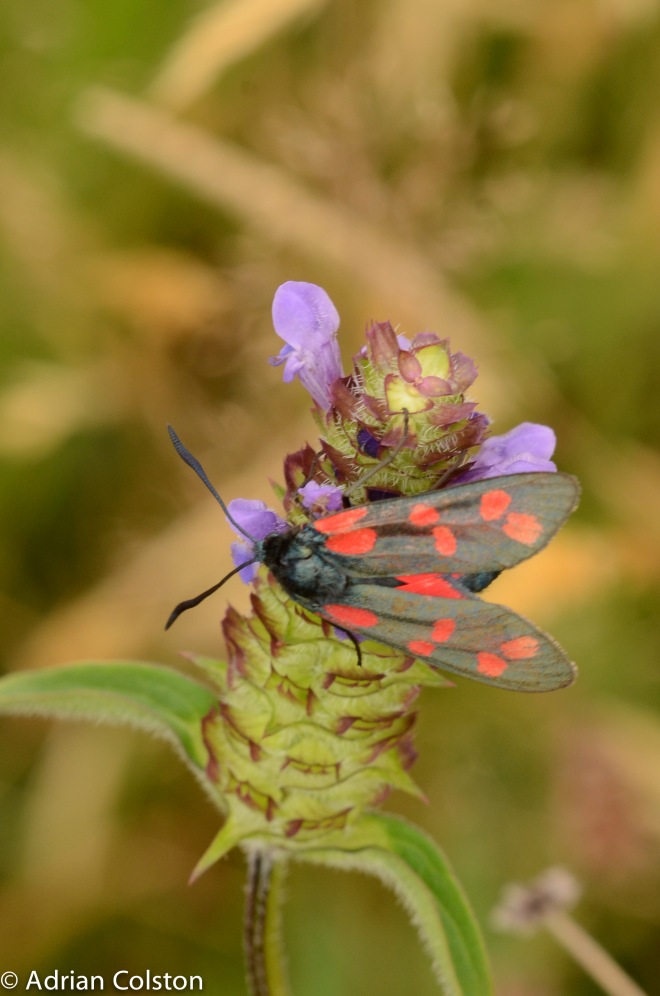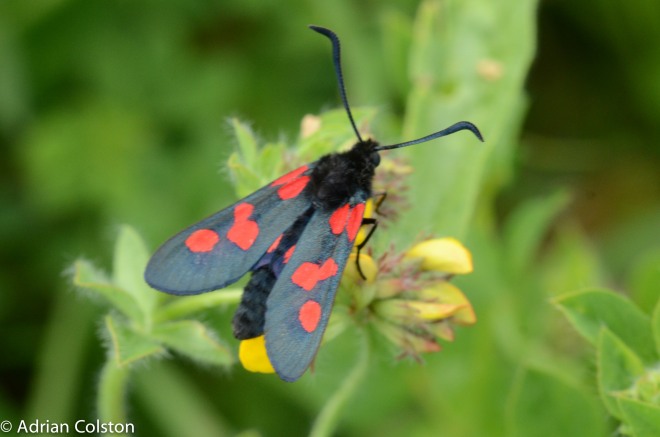I found a cinnabar moth on a stone beside my back door yesterday.

A relatively common moth with its striking colour patterns
 The caterpillars feed on ragwort.
The caterpillars feed on ragwort.
As many people will know ragwort is a poisonous plant especially to horses – the cinnabar caterpillar absorbs the poisonous alkaloids from the ragwort without effect. However a predator eating a caterpillar or the adult do get poisoned. As a result the caterpillar and the adult are brightly coloured to act as a warning to would be predators.
There is one exception to this – the cuckoo is quite able to feed on the caterpillars of the cinnabar without a detrimental impact.
There are a few other species that superficially resemble the cinnabar – these are the burnet moths. They have similar colouration but feed on bird’s foot trefoil and are therefore not poisonous to predators. A would be predator however is likely to avoid them thinking they are the unpalatable and toxic cinnabar.
 And this is a pair of narrow-bordered 5 spot burnets
And this is a pair of narrow-bordered 5 spot burnets
The wonders of nature!



Love the black and red.
A cinnabar moth and it’s relationship with ragwort was one of the first things I learnt when I started conservation volunteering. I love them for that and their beautiful colours.
I found one on Caldy Island just off the Pembrokeshire coast yesterday, first time I have seen one! beautiful moth